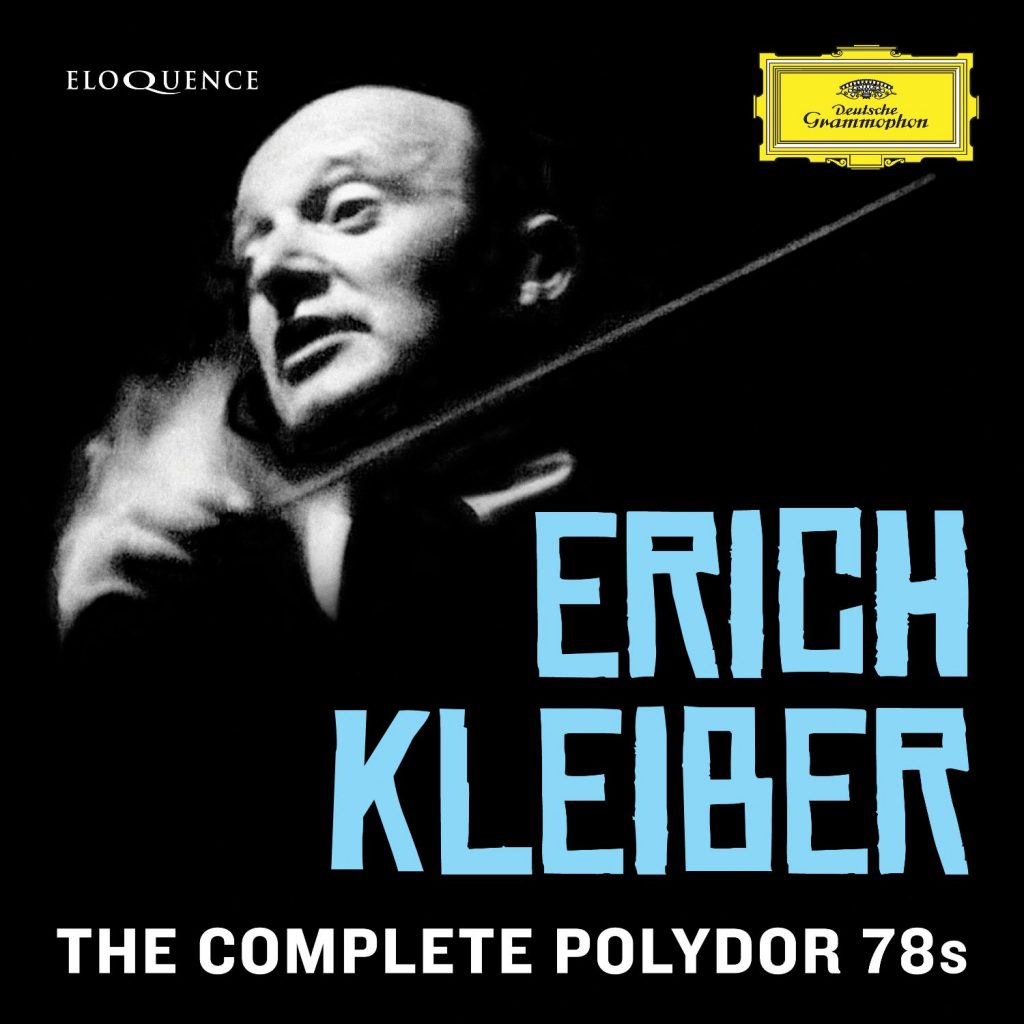

| Collected for the first time – Erich Kleiber’s rare recordings with the Staatskapelle Berlin and the Berliner Philharmoniker made for Polydor/Grammophon and newly remastered for this release.
Erich Kleiber’s appointment to the musical directorship of the Staatsoper Berlin in 1923 proved to be the making of his career. Hired on the strength of a single Fidelio, he thrilled audiences and critics with performances of unparalleled vigour and intensity. He soon began recording for the short-lived Vox company (not to be confused with the later US label) but in 1926 he agreed a contract with the Grammophon label, building on his regular season of orchestral concerts which were interspersed with opera performances. Here, newly remastered by Mark Obert-Thorn and issued complete for the first time in any format, is that Grammophon legacy of Kleiber’s Berlin years with both the Staatskapelle and the celebrated Berliner Philharmoniker. Beginning modestly enough with four of Mozart’s German dances – to fill two sides of a 78rpm record – the scope of the sessions expanded to take in complete symphonies by Beethoven (No. 2), Schubert (No. 8 ‘Unfinished’) and Dvořák (No. 9 ‘From the New World’) alongside much popular repertoire such as the incidental music to Rosamunde and A Midsummer Night’s Dream and the overtures to William Tell and Die Fledermaus. Many of these recordings were not marketed or reviewed abroad despite their artistic excellence, but Kleiber’s 1928 account of ‘Vltava’ from Má vlast soon gained classic status. No wonder, now, when listening again to the moonlit interlude and Kleiber’s gently flowing pulse, his superb balancing of parts which transcends the limitations of the technology and makes a nonsense of his apparent reluctance to record. Alternative versions of ‘Vltava’, as well as the second take of a side from the ‘New World’ Symphony which became Kleiber’s final Grammophon album (recorded in May and August 1929) are also presented. Alan Sanders provides an extensive note, and Mark Obert-Thorn provides a background to the sources for these recordings. As a Musical Times critic noted in 1929, Kleiber ‘has a marked predilection for spirited, graceful, charming, and vivid music’. These Grammophon records bring out the very best in him, and his gifts as a superb orchestral trainer may readily be appreciated despite the age of the recordings. The best possible sources have been unearthed, and the set is an unmissable contribution to the discography of one of the last century’s great, but sometimes overlooked, maestros. |
| CD 1 WOLFGANG AMADEUS MOZART (1756–1791) 1 Idomeneo – Overture, KV 366 Berliner Philharmoniker 2–11 German Dances Staatskapelle Berlin · Berliner Philharmoniker LUDWIG VAN BEETHOVEN (1770–1827) 12–15 Symphony No. 2 in D major, Op. 36* Staatskapelle Berlin FRANZ SCHUBERT (1797–1828)Rosamunde – Incidental Music, D.797 16 No. 5: Entr’acte No. 3 in B flat major* 17 No. 9: Ballet Music in G major* Staatskapelle Berlin CD 2 FELIX MENDELSSOHN (1809–1847) GIOACHINO ROSSINI (1792–1868) OTTO NICOLAI (1810–1849) CD 3 BEDŘICH SMETANA (1824–1884) ANTONÍN DVOŘÁK (1841–1904) *FIRST INTERNATIONAL CD RELEASE ON DEUTSCHE GRAMMOPHON
|
| CD 1 Track 1 Recording Location: Berlin, Germany, c. April 1928 Matrix No: 1016 ½ bm Original 78rpm Grammophon/Polydor Release: 66729Track 2-5 Recording Location: Berlin, 1926 Matrix Nos: 360 bm, 361 bm Original 78rpm Grammophon/Polydor Release: 66532Track 6-11 Recording Location: Berlin, Germany, March 1928 Matrix Nos: 489 ½ be, 490 be, 491 be Original 78rpm Grammophon/Polydor Releases: 66729–30 Track 12-15 Track 16-17 CD 2 Track 3-5 Track 6 Track 7 Track 8 CD 3 Track 2 Track 3 Track 4-7 Track 8 Track 9 Mastered by Mark Obert-Thorn |
“Kleiber gives the work a spirited and vivid reading. The recording itself is a satisfying one.” Music Supervisors’ Journal, December 1930 (Smetana: Vltava)
“Kleiber is particularly fine in his readings of Mozart, and gives to these dances a lilt and swing which are infectious, and a charming grace which makes their hearing a great joy.” Music Supervisors’ Journal, March 1931 (Mozart: German Dances)
“Kleiber reads the work in an energetic and at the same time restrained fashion. He has his orchestra in splendid control, and the mechanics of reproducing are so nicely carried out that the album becomes an invaluable one in any library of symphonic music,” Music Supervisors’ Journal, December 1931 (Beethoven, Symphony No. 2)
“An energetic and vigorous recording… an admirable set from all standpoints.” Music Supervisors’ Journal, October 1932 (Dvořák: Symphony No. 9)



